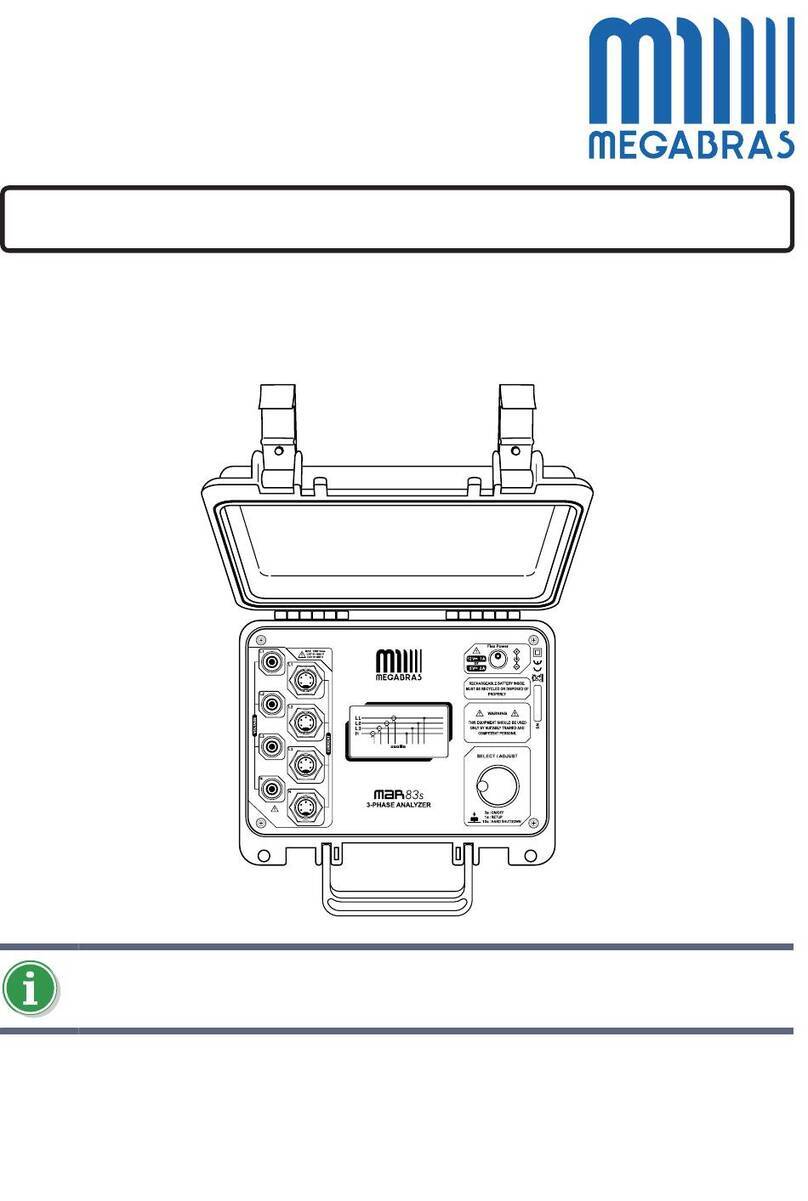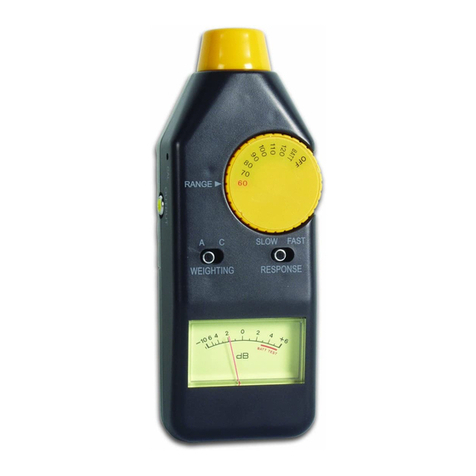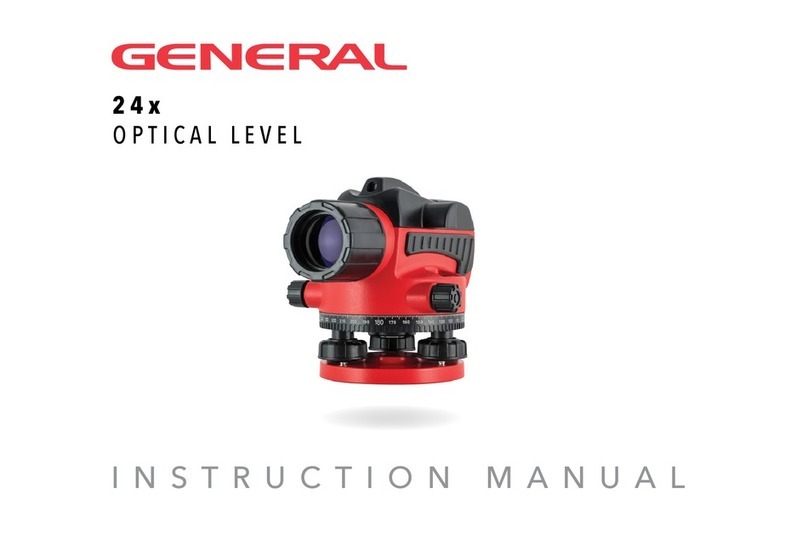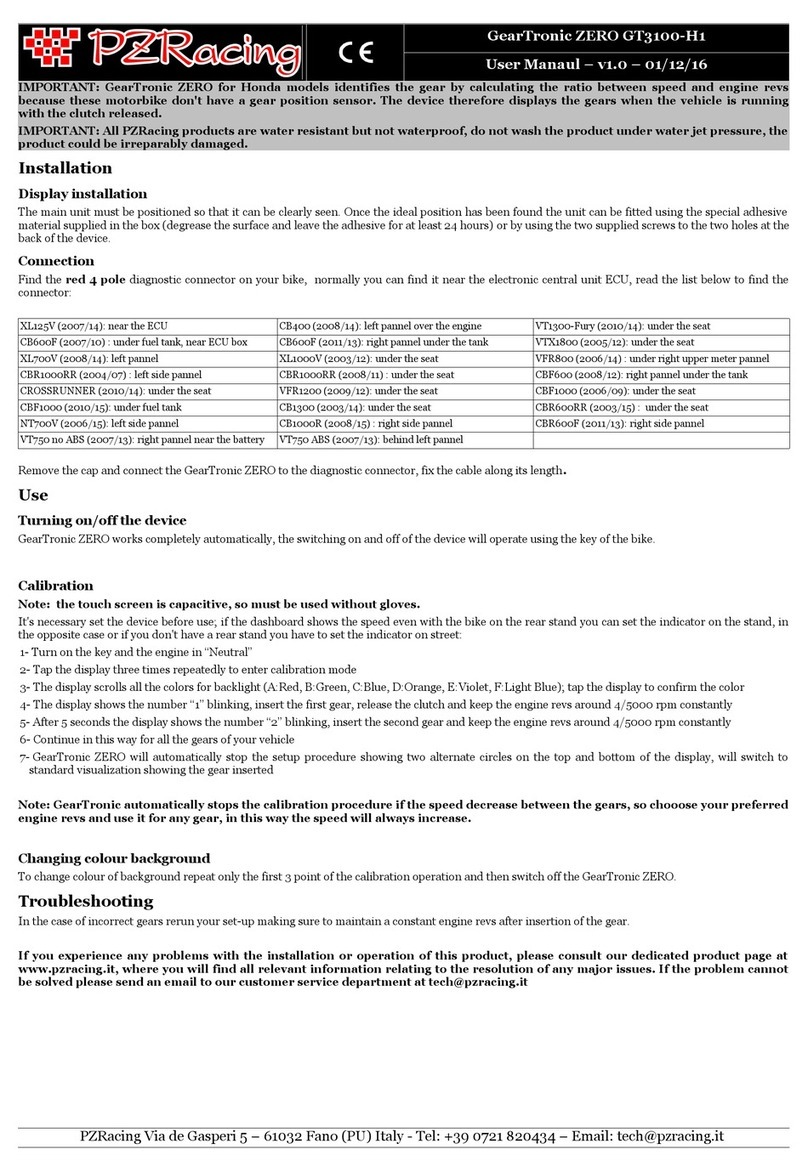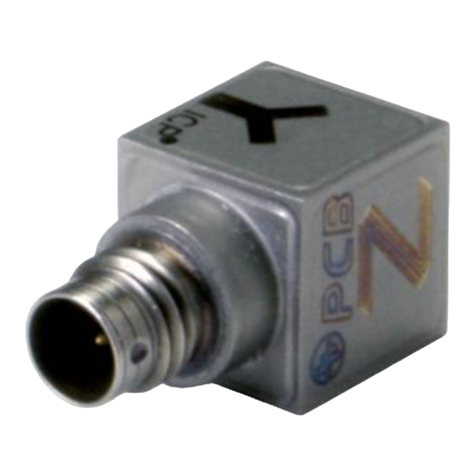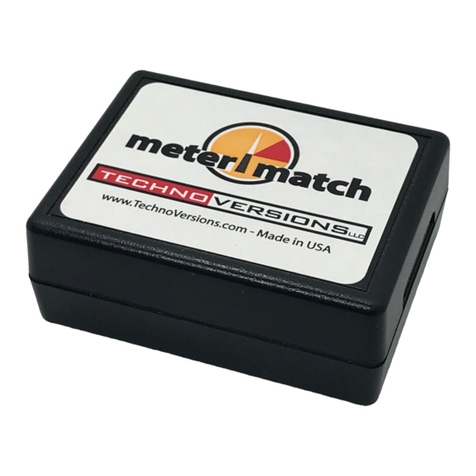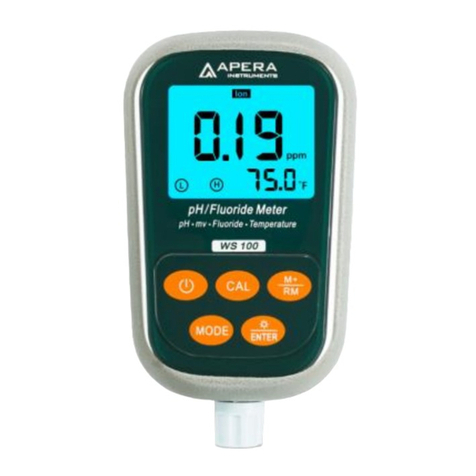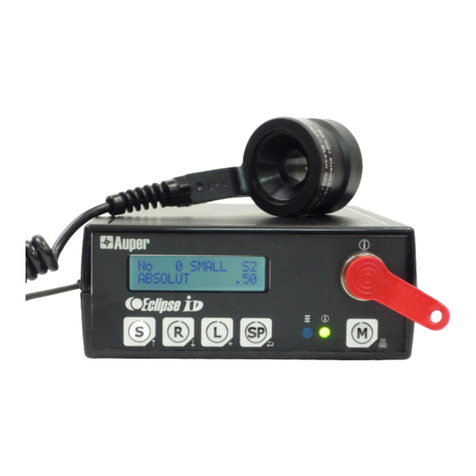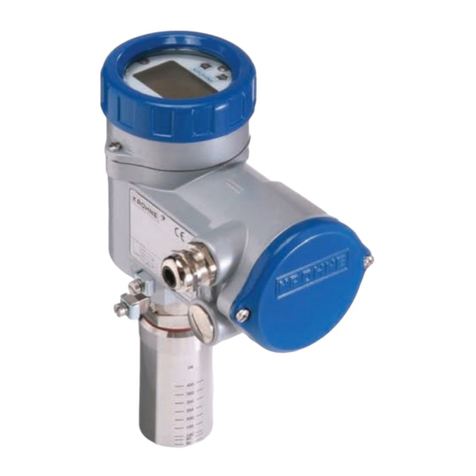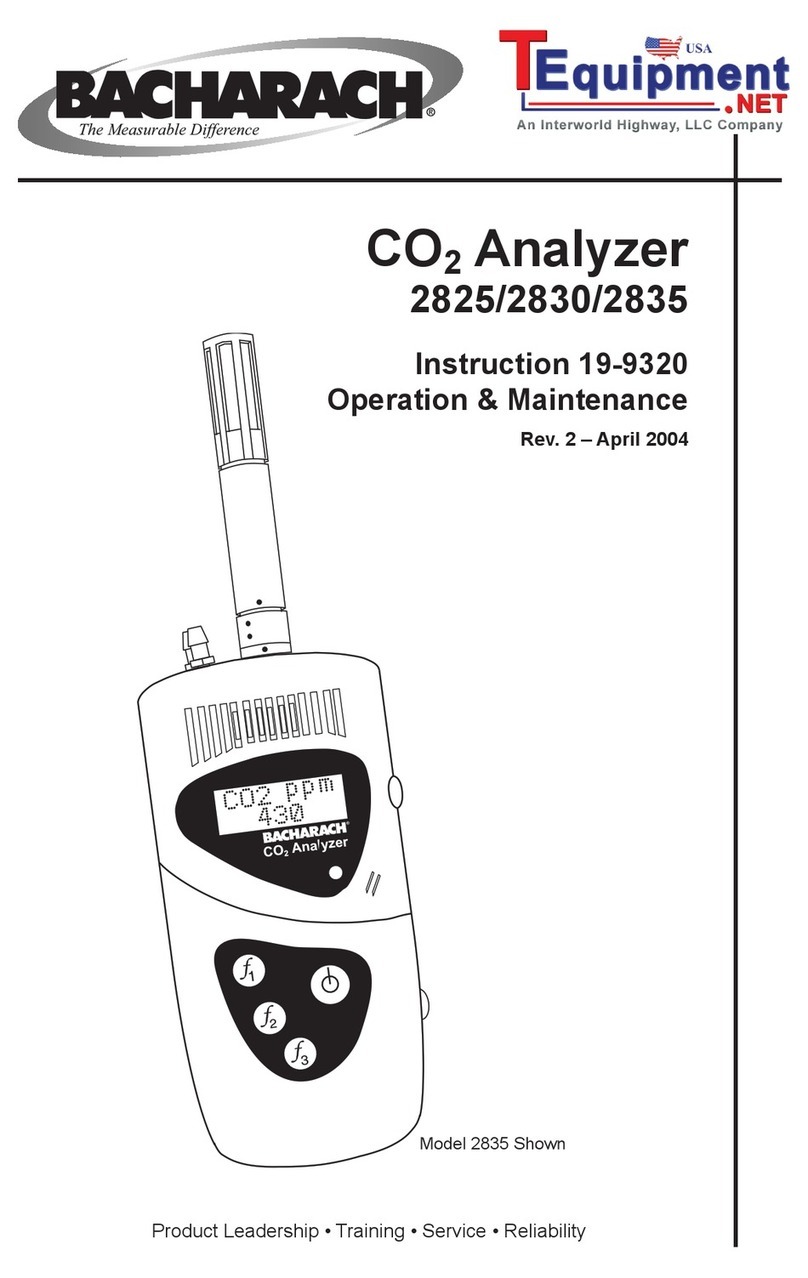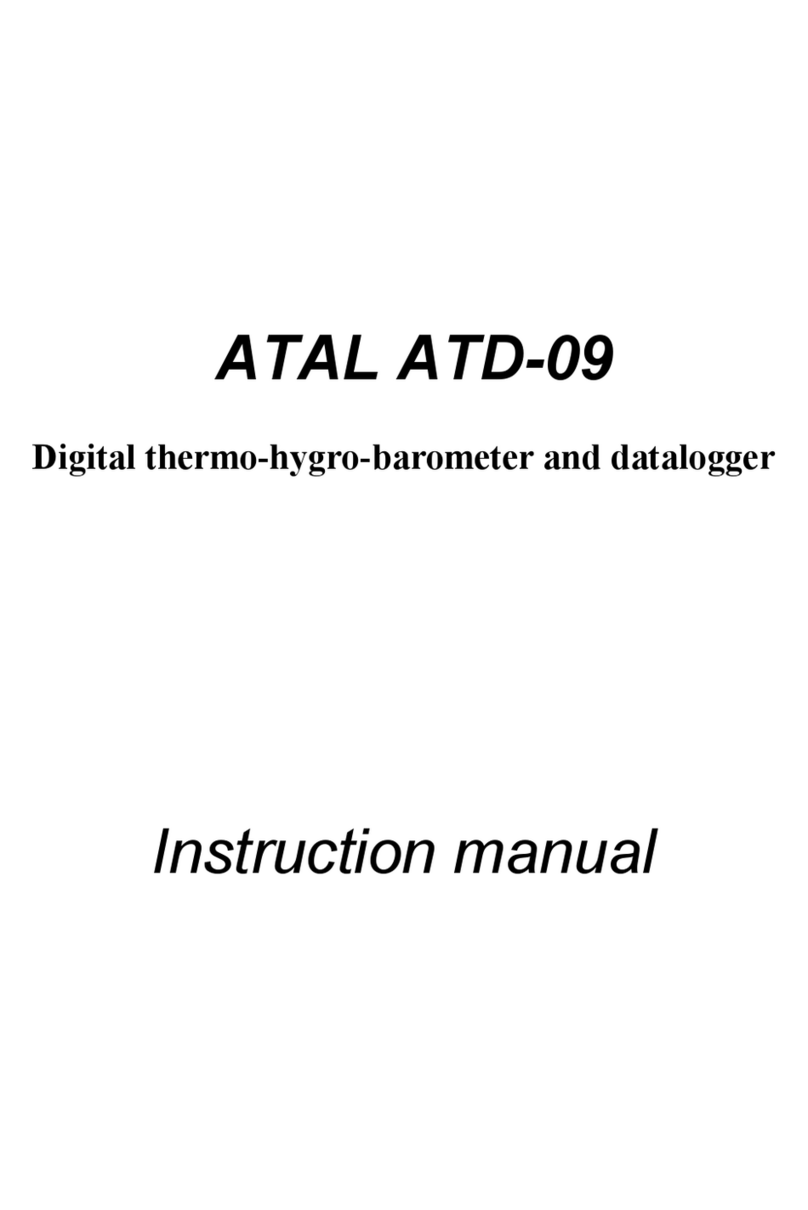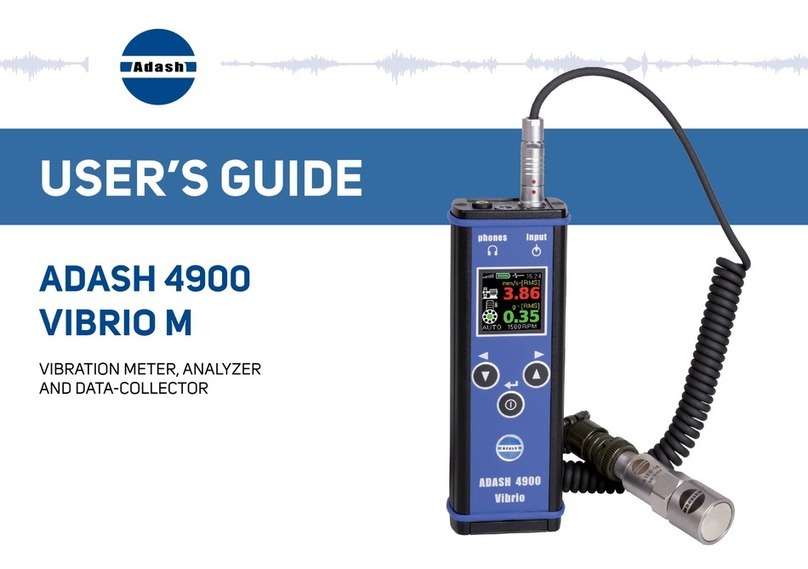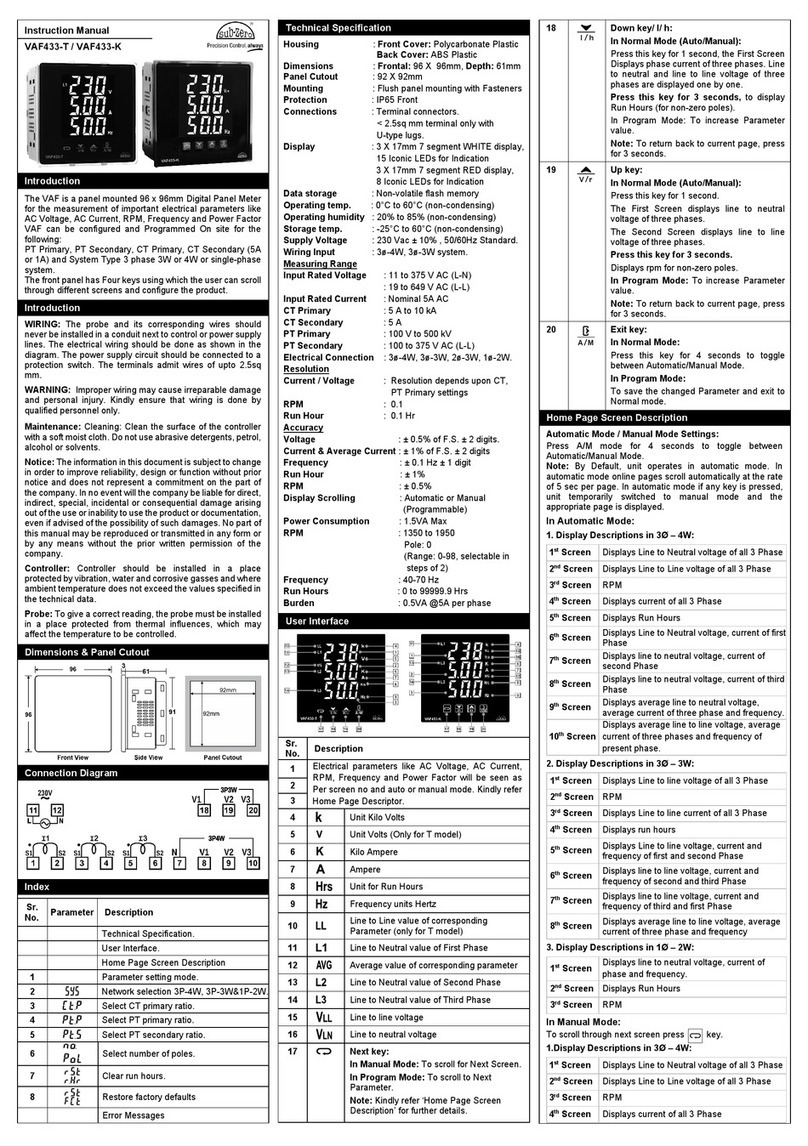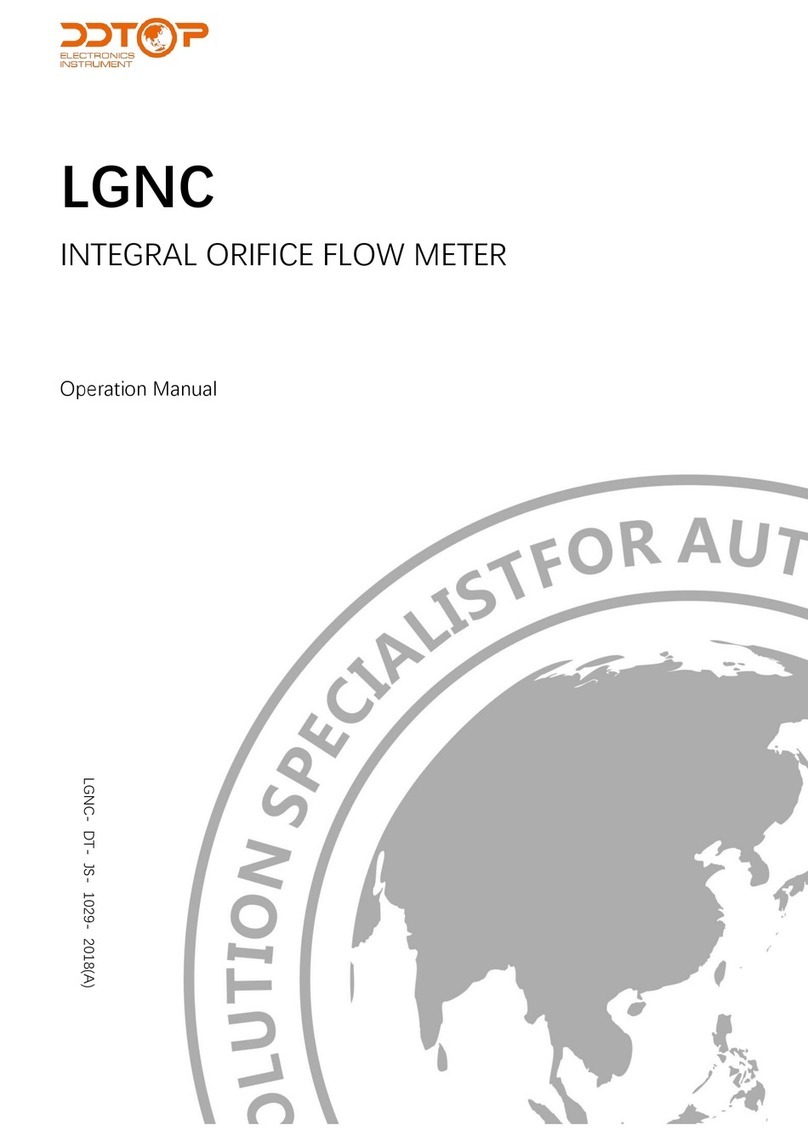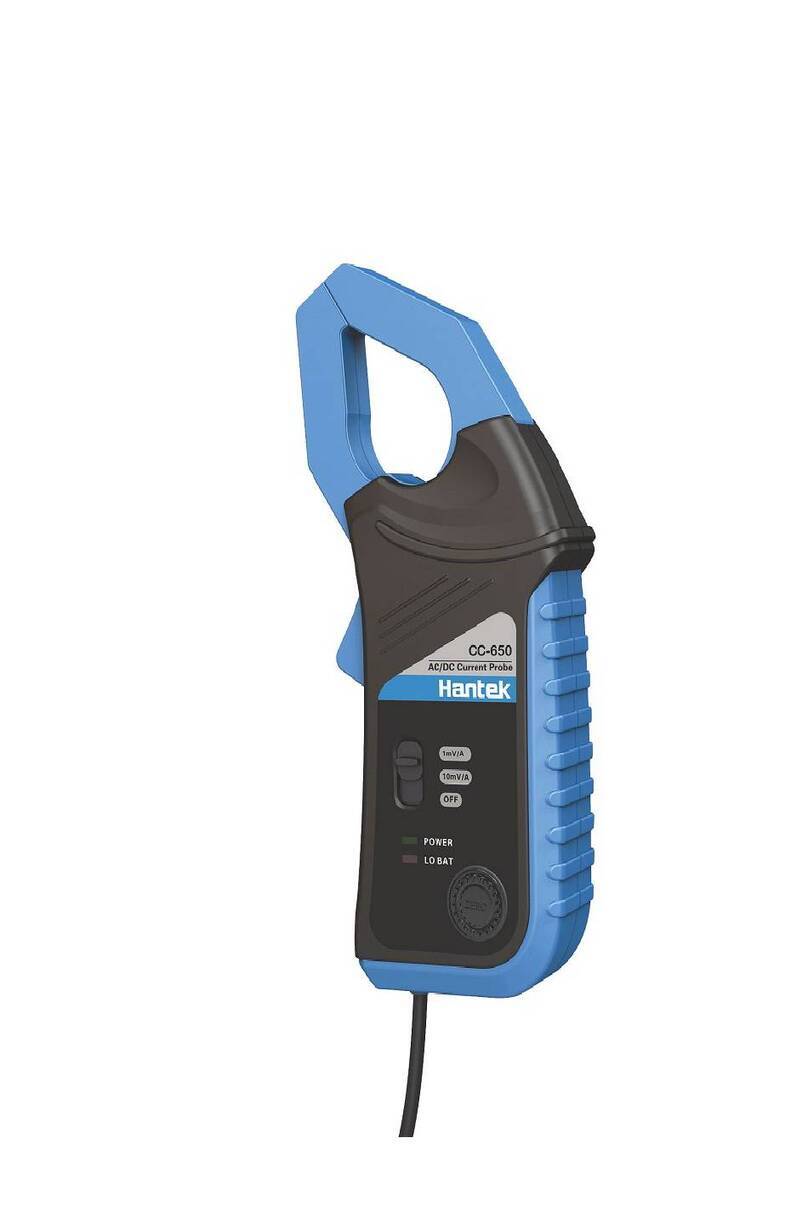MEGABRAS TR8703 User manual

Formato: 135mm x 190mm
P. 51
P. 03
Manual de uso
Medidor de relación de transformación
Digital Transformer Ratiometer User guide
TR8703

TR8703
Digital Transformer Ratiometer
User manual
GF-2068
3

Owner Registration
The serial number is located on the outer and front side of the instrument.
Please record this number and purchase date in your files.
TR8 03
SERIAL NUMBER: ___________________________________________
PURCHASE DATE : __________________________________________
DISTRIBUTOR : _____________________________________________
4

Index
1. Product features.....................................................................................................9
1.1. Description......................................................................................................9
1.2. Control features............................................................................................11
1.3. Cable Identification.......................................................................................12
2. Specifications.......................................................................................................13
3. Display Functions.................................................................................................16
3.1. Program flow................................................................................................16
3.2. Top level menu.............................................................................................16
3.3. Configure instrument....................................................................................1
3.3.1. Set Clock...................................................................................................19
3.3.2. Setup Nameplate.......................................................................................20
3.3.3. Select test type..........................................................................................23
3.3.4. Select test mode........................................................................................23
3.3.5. Select storage mode.................................................................................24
3.3.6. Select Filter................................................................................................25
3.3. . Erase Memory...........................................................................................26
3.3.8. Select Language........................................................................................2
3.3.9. Restoring factory defaults..........................................................................28
3.4. Recall Data...................................................................................................29
4. Operation.............................................................................................................31
4.1. Power up.......................................................................................................31
4.2. Running a test..............................................................................................32
4.2.1. VT/PT test..................................................................................................32
4.2.2. Storing the Measurement Record (Manual and Auto Mode)....................34
4.2.3. VT/PT Excitation Current...........................................................................35
4.2.4. Continuity Test...........................................................................................35
4.2.5. CT test.......................................................................................................36
4.3. Tips for Making Precise Ratio Measurements.............................................38
4.4. Ratio test - 1 : 1............................................................................................39
5. Connections.........................................................................................................40
5.1. Connection diagrams....................................................................................40
5.2. Polyphase Connections................................................................................41
6. Maintenance.........................................................................................................42
6.1. Charging the batteries..................................................................................42
6.2. Cleaning........................................................................................................45
. APPENDIX A........................................................................................................46
.1. Display messages........................................................................................46
8. APPENDIX B........................................................................................................48
9. Repair and calibration..........................................................................................49
9.1. Technical and Sales Assistance...................................................................49
10. Warranty.............................................................................................................50
5

WARNING
These safety warnings are provided to ensure the safety of personnel and proper
operation of the instrument.
This instrument is protected from accidental voltages of not more than 50V
with respect to earth. The guaranteed level of protection of this equipment may
be compromised if used in a manner not specified by the manufacturer.
Read the instruction manual completely and follow all safety information before
attempting to use or service this instrument.
The Digital Transformer Ratiometer TR8 03 is designed for use on de
energized (“dead”) transformers only. Make sure the test sample is
completely disconnected from AC power and is fully discharged.
Only qualified personnel should use the TR8 03.
The TR8 03 must not be used in a manner in which any of its components
(including test cables) are relied upon to provide protection from electric shock. No
high voltage insulation/protection is provided by any component of the TR 8 03.
Always make sure the circuit is fully discharged before attaching any test
cables..
Do not touch, adjust, or reposition test cables while the TR8 03 is conducting
a test.
Use caution on any apparatus: potentially high voltages and currents may be
present and pose a shock hazard.
Safety is the responsibility of the user.
Only use the charging unit supplied with the instrument to recharge the battery.
Never open the instrument while it is connected to AC power or when test
cables are connected to transformers, equipment, circuits, etc.
6

International electrical symbols
Signifies that the instrument is protected by double or reinforced
insulation.
CAUTION Risk of Danger! Indicates a WARNING and that the
operator must refer to the user manual for instructions before
operating the instrument in all cases where this symbol is marked.
Risk of electric shock. The voltage at the parts marked with this
symbol may be dangerous.
Ground/Earth
Important instructions to read and understand completely.
Important information to acknowledge.
Battery.
Fuse.
USB socket.
Compliance with the Low Voltage & Electromagnetic Compatibility
European directives ( 3/23/CEE & 89/336/CEE).
In the European Union, this product is subject to a separate collection
system for recycling electrical and electronic components In
accordance with directive WEEE 2002/96/EC.
Definition of measurement categories
CAT II: For measurements performed on circuits directly connected to the
electrical distribution system. Examples are measurements on household
appliances or portable tools.
CAT III: For measurements performed in the building installation at the
distribution level such as on hardwired equipment in fixed installation and
circuit breakers.
CAT IV: For measurements performed at the primary electrical supply (<1000V)
such as on primary overcurrent protection devices, ripple control units, or
meters.

Receiving Your Shipment
Upon receiving your shipment, make sure that the contents are consistent
with the packing list. Notify your distributor of any missing items. If the
equipment appears to be damaged, file a claim immediately with the
carrier and notify your distributor at once, giving a detailed description of
any damage. Save the damaged packing container to substantiate your
claim.
Ordering Information
TR8703 Digital Transformer Ratiometer
Includes NiMH batteries (installed), 115 V power cord, set of two 15 ft
leads, 10 ft USB cable, external battery charger (90-264 VAC 50/60 Hz),
soft carrying case, software, warranty certified and a user manual.
Accessories and replacement parts
Fuse - set of 5, 0.5 A 250 V (5x20 mm, Slow Blow)
Fuse - set of 5, 4 A 125 V (5x20 mm, Slow Blow)
Lead - Set of 2, 30 ft
Lead - Replacement Set of 2, 15 ft
Battery - Replacement Set of 2, 12 V NiMH rechargeable
Replacement Battery Charger
Replacement USB Cable, 10 ft
8

1. Product features
1.1. Description
The Digital Transformer Ratiometer TR8 03 is a lightweight, rugged,
portable instrument designed for onsite testing of power, potential and
current transformers.
Operation of the TR8 03 is fully automatic. No user calibration, range
selection, hand cranking or tedious balancing is required.
During each test cycle, the TR8703 automatically checks for:
H/X lead reversal
Continuity of tested circuits/windings (if configured)
Short circuit conditions (high current)
Upon completion of a test cycle, the TR8703 displays:
Turns Ratio: The ratio of the primary to secondary voltage at the trans-
former terminals due to test excitation
Excitation Current: The RMS excitation current in the H winding due to
test excitation during negligible loading of the associated X winding
Polarity: Indicates the polarity (phase) of X relative to H
Deviation: Indicates the deviation from nameplate ratio in %
Turns Ratio, Excitation Current, Polarity and Deviation are useful
parameters in diagnosing and predicting a variety of faults that occur in
power, potential and current transformers.
The TR8703 will display the following messages:
Incorrect Lead Connections
H/X Reversal (accidental step-up misconnection)
Short (excess excitation current)
Open Circuits
Circuit Continuity
Low Battery
9

In addition, the TR8 03 allows the user to store the data in automatic or
manual mode after each test eliminating the need to write down the test
results. Each measurement record is date and time stamped providing
complete test information.
The user can also save Nameplate voltages and compare the results as
the data is being gathered. The data can later be downloaded to a PC
and analyzed using the software package which is included with the
product.
The software allows full control of the instrument.
The TR8 03 utilizes an advanced, low-voltage, step-down
measurement technique in which the high voltage “H” windings are
subjected to test excitation. This results in greater operator safety
and the ability to test a much wider array of transformer types and
sizes.
10

1.2. Control features
1. Display: Displays data, status and control features of the instrument.
2. USB Conector: Allows connection to a computer for instrument
configuration set-up and status check, downloading of the stored data
using the software and running a test.
3. High side “H” Cable Connector (primary): Connection for the
primary side of the transformer.
4. Low side “X” Cable Connector (secondary): Connection for the
secondary side of the transformer.
5. Battery Charge Input Connector: Allows the smart charger to
charge the batteries.
6. Power Switch: Turns the instrument ON or OFF (if the charger is not
connected). If the charger is connected, the batteries charge in
OFF/CHARGE position.
7. Operation and Battery Low Indicator: Green LED indicates that the
instrument is on and blinks when the batteries are getting low (<12 V).
The instrument will completely shut down when the batteries are
below 8. V.
11

8. Display Contrast Adjustment: Allows adjustment of the display
contrast.
9. Function Keys: Allows navigation of the menu and functions of the
instrument.
10. Backlight Control Button: Turns the display backlight ON or OFF.
11. Test Button: Runs the selected test when pressed and released.
1.3. Cable Identification
H
RED INLINE PLUG
"H" IDENTIFIER
5 PIN
CONNECTOR
H CABLE SET
Primary (H) Cable:
"H" IDENTIFIER
BLACK INLINE PLUG
X X
3 PIN
CONNECTOR
X CABLE SET
Secundary (X) Cable:
RED INLINE PLUG
"x" IDENTIFIER
"x" IDENTIFIER
BLACK INLINE PLUG
Each cable is clearly marked. The Primary (H) cable has a 5-pin
connector and the Secondary (X) cable has a 3-pin connector. They
cannot inadvertently be connected incorrectly.
12

2. Specifications
Reference Conditions: 23°C ± 5°C (30 to 50% RH) range. Add 25 ppm/°C from
-10° to 18°C and 28° to 50°C to all accuracy specifications. No external electrical or
magnetic fields. Output current ≤150 mA for VT/PT and ≤ 50 mA for CT. Calibration
cycle is 1 year.
Electrical
Ratio Range (VT/PT) Autoranging: 0,8000 to 8000:1
Accuracy (VT/PT) Ratio range Accuracy (% of reading)
0.8000 to 9.9999 ± 0.2%
10.000 to 999.99 ± 0.1%
1000.0 to 4999.9 ± 0.2%
5000.0 to 8000.0 ± 0.25%
Ratio Range (CT) Autoranging: 0.8000 to 1000.0
Accuracy (CT) Ratio Range Accuracy (% of Reading)
0.8000 to 1000.0 ± 0.5%
Excitation signal Modo VT/PT: 32 VRMS máx.
CT mode: auto level 0 to 1 A, 0.1 to 4.5 VRMS
Excitation current display Range: 0 to 1000 mA
Accuracy: ± (2% of reading + 2 mA)
Excitation Frequency 0 Hz
Display Dual line alpha-numeric LCD, 16x2 characters with
contrast adjustment and backlight control.
Day/night visible.
Measurement Method In accordance with IEEE Std C5 .1290™-2006
Power Source Two 12 V, 5x2, 1650 mAH NiMH rechargeable
battery packs
Battery Life Up to 10 hrs of continuous operation. Low battery
indication.
Battery Charger Universal input (90 to 264 Vrms input) smart recharger
Charging Time < 4 hrs
Data Storage 99 objects with 99 tests each
Date/ Time Battery-backed, Real-time clock
Communication USB. 2.0 compliant, optically isolated, 115.2 KB
Software Analysis software included
13

Mechanical
Dimensions 10. 0 x 9. 6 x 5.12" (2 2 x 248 x 130 mm)
Weight 8.1 lbs (3. kg)
Connection XLR connectors
Leads 15 ft (4.6m) H & X shielded with large color-coded
industrial alligator clips in carrying bag
Enclosure Heavy duty Polypropylene case, UL 94 V0
Vibration IEC 68-2-6 (1.5 mm to 55 Hz)
Shock IEC 68-2-2 (30 G)
Drop IEC 68-2-32 (1m)
Index of protection IP 40 (Instrument lid open) per EN 60529
IP 53 (Instrument lid closed) per EN 60529
Environmental
Operation temperature 14° to 122°F (-10° to 50°C)
Storage temperature -4° to 140°F (-20° to 60°C)
Relative humidity 10 to 85% RH @ 35°C
Altitude Up to 6560 ft (2000 meters)
Safety
Safety rating EM 61010-1, 50 V CAT IV; pollution degree 2
Double insulation Yes
14

Battery charger specifications
No load Voltage 41 V ± 2 V
Fast Charge Current 0.9 A ± 0 mA
Top off Charge 130 mA ± 40 mA
Charge Termination
Options
-dV, dT/dt
Input Rating 90 a 264 V~ / 4 a 63 Hz
Maximum Output Power 35 W
Trickle Charge Current 50 mA ± 25 mA
Leakage Current
(from battery with mains off)
< 1 mA
Dimensions 4.22" x 2.64" x 1.44" (10 x 6 x 36.5 mm)
Weight 0.55 lbs (250g)
Input Connection 2 pins IEC 320-C
Output Connection NiMH: 3 pins DIN
Operating Temperature -4° to 104°F (-20° to 40°C)
Insulation class II
Electrical safety approval EN 60601-1, EN 60950, EN 60335-2-29
EMC standards EN 61000-6-3 (Emission),
EN 61000-6-1 (Immunity)
Specifications are subject to change without notice.
15

3. Display Functions
3.1. Program flow
In order to use the instrument efficiently, it is important to understand the
program flow.
• Pressing the ▼ and ▲ keys simultaneously allows going up one level
(if there is a level) in the program flow.
(Vertical navigation moving up a level).
• Pressing the ▼ or ▲ key allows navigation within the level.
(Horizontal navigation).
• Pressing the ENTER key allows the selection and display of choices
one level below (if there is a level) in the program flow.
(Vertical navigation moving down a level).
3.2. Top level menu
The instrument has a top level control.
The user can navigate around the ring by pressing the ▼ or ▲ key.
Main Screen
Recall Data
Configuration
Once the instrument is turned on, it initializes and then displays the Main
Screen:
16

•Main Screen: Displays the Test Type, Test Mode, Filter [Fast (F),
Normal (N) or Slow (S)], Storage Mode [Auto (A) or Manual (M)] and
the Present Nameplate values (if enabled).
•Configure Instrument: Configures the instrument (see § 4.3).
•Recall Data: Stored data can be selected and displayed (see § 4.4).
NOTE: The program flow is two or three levels deep at various
points. The available choices for a level can be viewed by pressing
the ▼ or ▲ keys.
The ENTER key is used to select the following functions:
• Enter configuration menu.
• Enter Recall Data menu.
• Initiate storage of test results, accept location parameters and store the
Measurement Record.
3.3. Configure instrument
With the display showing Configure Instrument, press the ENTER key.
The configuration ring can be navigated around using the ▲ or ▼ key.
•Set Clock: Allows the setting of Time and Date.
•Setup Nameplate: Allows selection and editing of Present Nameplate
voltages or ratios. Predefined ratios can only be edited through
software.
•Select Test Type: Allows the selection of Test Type (VT/PT or CT).
•Select Test Mode: Allows selection of the Test Mode (Ratio or
Continuity/ Ratio in VT/PT Mode).
•Select Storage Mode: Allows the selection of data storage mode
(Automatic or Manual).
1

•Select Filter: Allows selection of filter (Fast, Normal, Slow). See §
4.3.6.
•Erase Memory: Allows deletion of all the stored measurement records.
•Select Language: Allows selection of language on the display
(English, French, German, Italian, Spanish, Portuguese).
NOTE: To move one level up and return to Configure Instrument,
press the ▼▲ keys simultaneously.
18

3.3.1. Set Clock
Within the top level of Configure Instrument, press the ▼ or ▲ key until
Set Clock appears on the display, then press ENTER.
The Set Clock configuration allows you to format the following:
Date Format: Allows the formatting of the date.
(MM/DD/YY, DD/MM/YY, YY/MM/DD).
Time Format: Allows the formatting of the time (12 or 24 hours).
Set Date and Time: Allows the setting of the date and time in the
selected format.
Nota: Time must be set in the 24-hour format. It will be displayed with
AM/PM if the 12-hour format is chosen.
19

To maneuver between the Set Clock configuration settings, perform the
following:
1. Within the top level of Configure Instrument, press the ▼ or ▲ key
until Set Clock appears on the display, then press ENTER to configure
the date.
2. Use the ▼ or ▲ keys to view the choices. Press ENTER to make a
selection. Once the format is selected, the display returns to Date
Format
3. Use the ▼ or ▲ keys to navigate to the other date and time options or
press both ▼▲ keys together to return to the top level.
3.3.2. Setup Nameplate
Nameplate values are primary and secondary voltages (or ratios)
associated with a given transformer. This information is available on the
Nameplate of the transformer. The measured results will be compared
with selected (edited) Nameplate values and Deviation will be displayed
and stored in % relative to these values.
The TR8 03 allows the storage of 10 Nameplate voltages or ratios which
can be individually selected for a given test.
NOTE:
• The Nameplate list of up to 10 transformers can be written to and
saved only using the software. The values in the list can be edited for
use but cannot be saved from the front panel.
• The keys on the front panel can select any one of the 10 transformer
Nameplate values. Once the transformer values are selected, they can
be edited to a new value using the ▼, ▲ and ENTER keys. When the
new values are selected (even if they are not edited to new values), it
becomes the Present Nameplate and will be used for all subsequent
VT/PT and CT measurements. Deviation will be reported and stored
using these values.
• The Present Nameplate values will be retained in memory even if the
instrument is turned OFF and turned ON. However, it will not be saved
in the list from which it was originally selected.
20

• The user can select another Nameplate from the list in the future and
may or may not edit the values. As soon as the new Nameplate values
are selected (and/or edited), it becomes the new Present Nameplate.
• The Present Nameplate values are displayed in the Main Screen.
• Each Measurement Record will record the Present Nameplate along
with other associated parameters and will be available when the data is
downloaded.
• The Ratio of the nameplate values must be between 1 and 32 6 .
• The Nameplate needs to be enabled. If the Nameplate is not enabled,
the Deviation % will not be reported after the measurements.
Subsequently, the stored values will not have Nameplate and Deviation
% in the Measurement Record.
NOTE: The Main Screen will display the Present Nameplate only if
it is Enabled. If it is not Enabled, it will display "---" for Primary and
Secondary.
To configure the settings for the Nameplate, perform the following:
1. Within the top level of Configure Instrument, press the ▼ or ▲ key
until Setup Nameplate appears on the display, then press ENTER.
2. The display will show Enable with Yes and No choices. Press the ▼
key to select Yes (Enable Nameplate).
21
Table of contents
Languages:
Other MEGABRAS Measuring Instrument manuals
